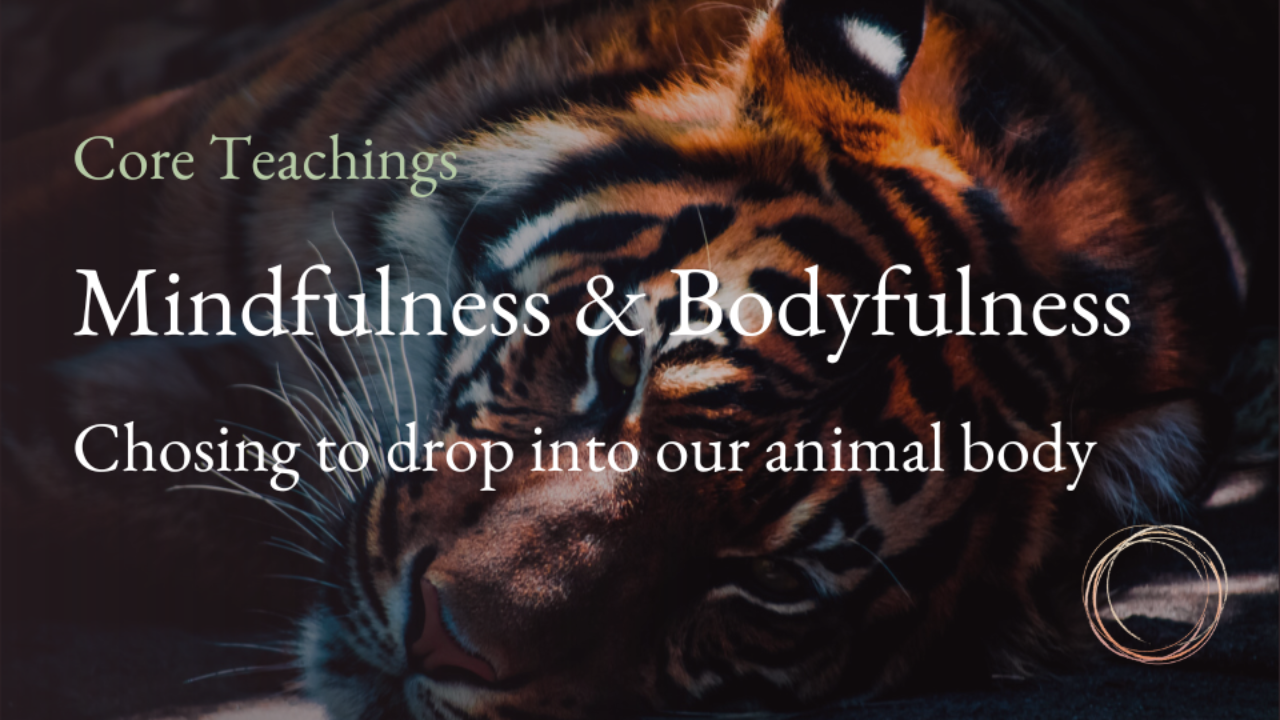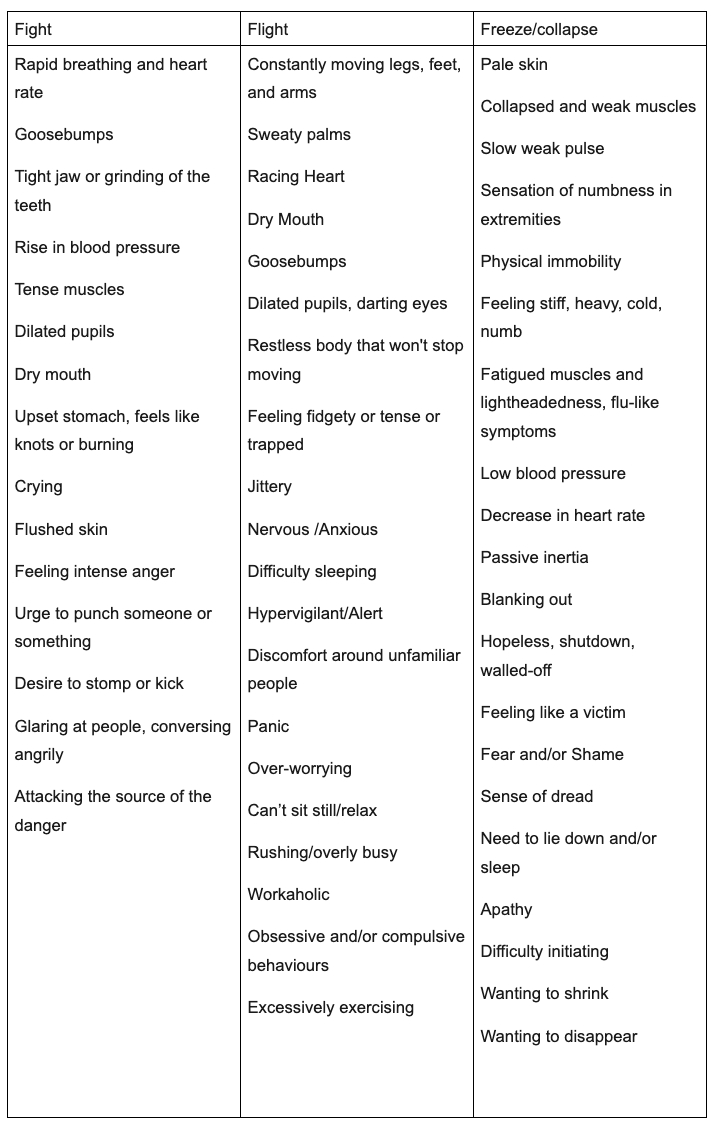Mindfulness & Bodyfulness
Sep 12, 2023
There is a direct relationship between mindfulness and somatic safety.
When we are triggered out of our window of tolerance, the very first step in restoring our sense of safety and returning as quickly as possible to social engagement mode is a moment of mindfulness.
Basically, we need to be able to notice that we have been triggered before we can have any chance of doing anything about it.
Unless we develop this capacity to notice when we are triggered, we have no point of choice in which to respond mindfully instead of reactively.
So, in this post, we’re going to take a detailed look at the initial moment of mindfulness, and what is involved in noticing that we are triggered.
Let’s dive in.
Understanding triggered states
It will sound obvious, but the very first thing that’s needed for us to be able to notice that we are triggered is to get clear on the difference between triggered states and the ground state of somatic safety.
The clearer we get on this difference, and on the negative impact that being triggered has on our relational capacities, the easier it is to notice when we have moved out of our ground state, and the more motivated we are to return to safety as soon as possible.
This is why we emphasise the various maps and models of the nervous system, to build a clear picture of what is going on in our bodies when we are triggered.
Noticing trigger symptoms
The process of noticing when we are triggered becomes easier the more familiar we are with the actual symptoms of being triggered.
And there are lots of clear symptoms to notice.
Some of these are physiological, some emotional, some mental, some behavioural, and some relational.
In any triggered state, a number of symptoms will be showing up simultaneously.
For example, in a fight response, we might experience shallow breathing, a tight jaw, angry feelings, racing thoughts, the urge to lash out…
In terms of the initial moment of mindfulness, it’s enough to notice any one of these symptoms, and use that as a signpost to become aware that there’s an opportunity to choose to self-regulate and return to the sense of safety, instead of reacting unconsciously.
Again: unless we notice that we’re triggered, there’s nothing we can do to consciously change our state; and the sooner we notice, the sooner we can choose to regulate.
And so, mindfulness is the key moment in the process of regulation.
Identifying trigger symptoms
Below is a table of trigger symptoms, grouped into fight, flight, and freeze/collapse responses.

We’ve all experienced at least some of these symptoms.
Having this comprehensive list to draw on will hopefully help you to better connect with the full range of possible signs, symptoms, sensations, emotions and behaviours associated with triggered (reactive) states.
To the body
As soon as we notice that we’re triggered, a little space opens up inside us, between our conscious self and our triggered state.
In this mindful space, we have a choice.
Ultimately, that choice comes down to whether to let ourselves follow previous patterns of reactivity, based on survival strategies or procedural learning, or whether to interrupt these patterns and apply resources that will return us to within our window of tolerance.
The big difference between a bottom-up somatic approach to self-regulation, and top-down approaches commonly used in mindfulness traditions, is that the former emphasises a conscious return to the body.
Here, mindfulness provides the opening, but the regulation happens in the animal body, working directly with the body's own deep intelligence.
We can use the term ‘bodyfulness’ to describe the experience we enter when we return to the body in this way.
Bodyfulness
When we drop into bodyfulness, we enter into a relationship of intimacy with our sensations, our sense perceptions, and movement impulses.
In contrast to mindfulness, which experiences the body as an object of awareness, subtly separate from the experiencing subject, bodyfulness experiences the body as being intelligently aware of itself.
In bodyfulness we are one with our animal body.
But this doesn’t mean that we lose our higher cognitive functions.
Instead, mind is restored to body, so that thinking, reasoning, problem solving, and the like take place in and as the body – not in some dissociated mind-space.
To refer back to the model of the triune brain, in bodyfulness we fully experience ourselves as all the three parts of ourselves – neo-cortex, limbic system, and reptilian brain.
The capacity for bodyfulness is developed through integrating the three parts of the triune brain.
This might sound quite abstract and philosophical, but when it comes to the art of self-regulation, it’s actually a definite and palpable shift.
Modern western culture has done a fair job of separating mind from body in our experience of ourselves – that is, of separating the neo-cortex from the limbic and reptilian brain systems.
And if you add to this the dissociation from the body that comes with trauma, it's easy to see why so many of us are walking around trapped in our heads, cut off from our animal bodies.
So the move back towards the experience of bodyfulness is so important for us on a number of levels – in order to regulate our nervous system when we have been triggered, and also when it comes to the more extended work of integrating trauma and healing long-term dissociation.
Trigger symptoms as an opportunity
This understanding of bodyfulness as a positive and integrative experience opens up the possibility of approaching trigger symptoms as reminders to return to deeper embodiment.
Triggered states become opportunities to be embraced, instead of problems to be solved.
Whenever we notice that we are feeling activated, that is, whenever we notice that we are experiencing any of the trigger symptoms, we can use this as a signpost to indicate that now is the time to drop into bodyfulness.
What else am I sensing in my body right now? What am I feeling? What are my movement impulses?
What is happening now, vs. the stories I am making up about it?
These enquiries automatically drop us deeper into our bodies, and in doing so create an initial increase in our sense of somatic safety.
For however uncomfortable our bodily sensations or feelings might be in triggered states, tuning into these symptoms sends an immediate message to our nervous system that we are more present to it, and that translates into an increase in our sense of safety.
Even better, at this point we have entered into a positive spiral, because that small increase in safety helps bring more of our full capacity back online, which gives us more choice about how to respond to the trigger.
And, as we’ve been repeating all the way through this series of core teachings, the best choice we can make in most triggered states in which there isn’t actually a physically dangerous or life-threatening situation is to apply our bottom-up somatic resources to help us return to within the window of tolerance.





